Achievement Spread
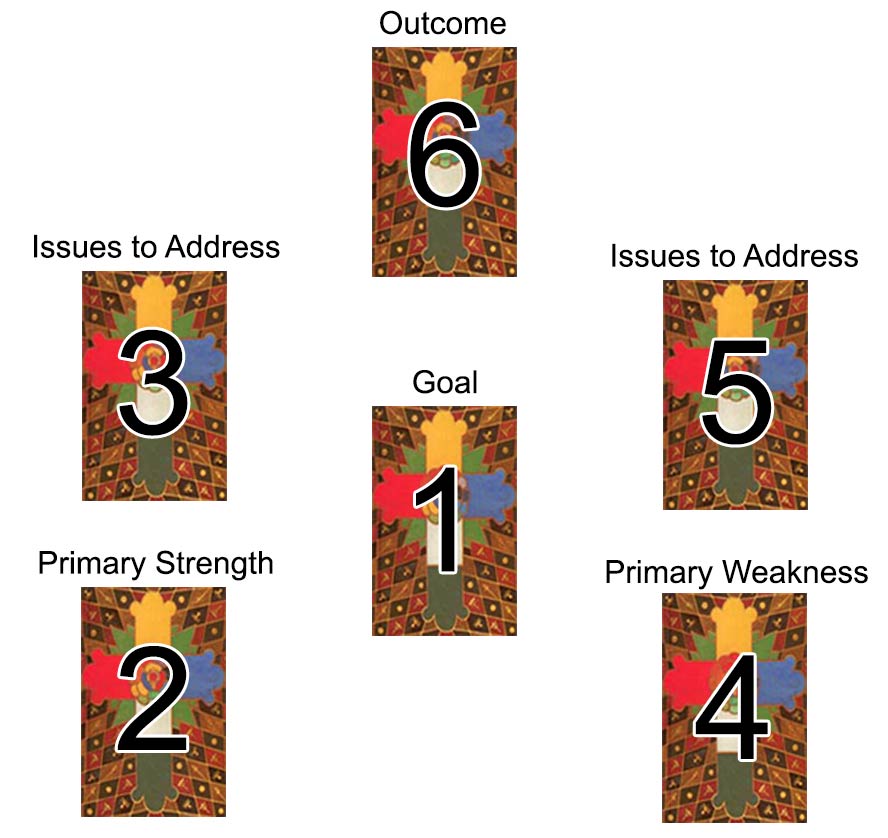
Card Positions
- Your goal
- Primary strength
- Issues to address
- Primary weakness
- Issues to address
- Outcome
Your Achievement Reading
Outcome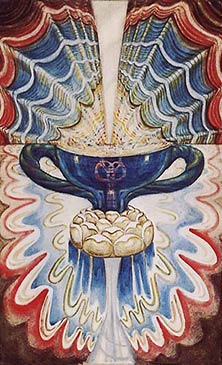 Ace of Cups |
||
Issues to Address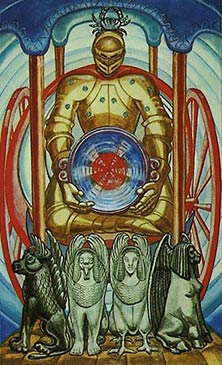 The Chariot |
Your Goal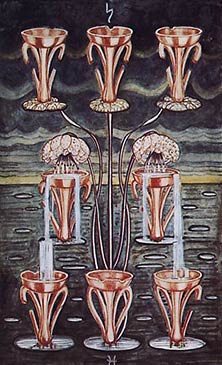 8 of Cups |
Issues to Address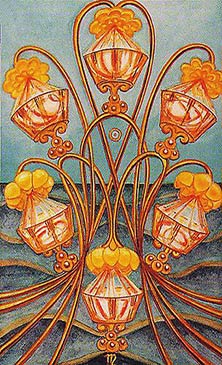 6 of Cups |
Your Strengths The Star |
Your Weaknesses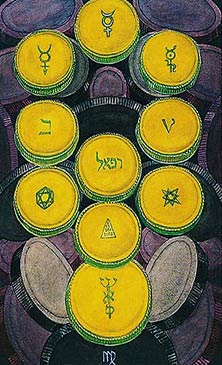 10 of Disks |

8 of Cups
Saturn in Pisces - Indolence
Lotuses droop for lack of sun and rain, and the soil is poison to them; only two of the stems show blossoms at all. The cups are shallow, old and broken. They are arranged in three rows; of these the upper row of three is quite empty. Water trickles from the two flowers into the two central cups, and they drip into the two lowest without filling them. The background of the card shows pools, or lagoons, in very extensive country, incapable of cultivation; only disease and miasmatic poison can flourish in those vast Bad Lands. The water is dark and muddy. On the horizon is a pallid, yellowish light, weighed down by leaden clouds of indigo.

Aquarius
Hope, unexpected help, clearness of vision, realization of possibilities, spiritual insight, with bad aspects, error of judgment, dreaminess, disappointment.

Cancer
Triumph, victory, hope, memory, digestion, violence in maintaining traditional ideas, the "die-hard", ruthlessness, lust of destruction, obedience, faithfulness, authority under authority.

Mercury in Virgo - Wealth
Mercury rules this card in Virgo; and this may imply that the acquired wealth, being inert, will be dissipated unless put to further use by devoting its power to objects other than mere accumulation. The disks, or (as they have now become) coins, are arranged on the Tree of Life, but the Tenth coin is much larger than the rest; the image indicates the futility of material gain.
These disks are inscribed with various symbols of mercurial character except that the coin in the place of Hod (Mercury) on the Tree is marked with the cipher of the Sun.

Sun in Scorpio - Pleasure
This card shows the influence of the number Six, Tiphareth, in the suit of Water. This influence is fortified by that of the Sun, who also represents the Six. The whole image is that of the influence of the Sun on Water.
The lotus stems are grouped in an elaborate dancing move ment. From their blossoms water gushes into the Cups, but they are not yet full to overflowing, as they are in the corresponding card below; the Nine. Pleasure, in the title of this card, must be understood in its highest sense: it implies well-being, harmony of natural forces without effort or strain, ease, satisfaction. Foreign to the idea of the card is the gratification of natural or artificial desires. Yet it does represent emphatically the fulfilment of the sexual Will, as shown by the ruling Sephira, planet, element, and sign.

The Root of Water
This card represents the element of Water in its most secret and original form. It is the feminine complement of the Ace of Wands, and is derived from the Yoni and the Moon exactly as that is from the Lingam and the Sun. The third in the Hierarchy. This accord ingly represents the essential form of the Holy Grail. Upon the dark sea of Binah, the Great Mother, are Lotuses, two in one, which fill the cup with the Life-fluid, symbolically represented either as Water, as Blood, or as Wine, according to the selected purpose of the symbolism.
Above the Cup, descending upon it, is the Dove of the Holy Ghost, thus consecrating the element. At the base of the Cup is the Moon, for it is the virtue of this card to conceive and to produce the second form of its Nature.

